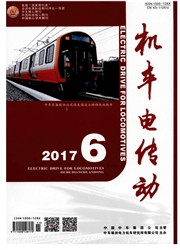

 中文摘要:
中文摘要:
针对动车组列车安全状态检测实时性要求较高的特点,对交换式工业以太网和CAN总线构成的异构网络应用于动车组列车安全状态检测进行了研究.综合分析了交换式工业以太网和CAN总线的周期性报文最大传输时延,建立了安全状态检测网络周期性报文最大传输时延的解析模型.基于该解析模型得出影响网络传输时延的主要因素为CAN节点、Ethernet/CAN网关和车厢级交换机的个数.最后分析了整个网络中周期性报文的最大传输时延随着CAN节点、Ethernet/CAN网关和车厢级交换机个数的变化趋势,并对所建立的解析模型进行了仿真验证.所建立的网络时延模型为定量分析网络实时性提供了理论依据.该建模方法可以推广到其他轨道交通列车中.
 英文摘要:
英文摘要:
According to the strictly real-time demands for safety state detection of EMUs, safety status detecting network of EMUs based on the heterogeneous network that consists of switched industrial Ethernet and CAN bus was studied. In order to satisfy the real-time performance of the network, the worst case network delay of the periodic messages was analyzed, and the analysis formula of delay in worst case was deduced. It was clear that the main factors affecting the worst case network time delay were the number of CAN nodes, Ethernet/ CAN gateways and vehicle level switches based on the analysis formula. The trends of the worst case network delay with the changes of CAN nodes, Ethernet/CAN gateways and vehicle level switches were analyzed, and the analytical model was validated by simulation. The worst case network delay model provided a theoretical basis for the quantitative analysis of network performance. The modeling methods and conclusions could be generalized to other rail traffics.
 同期刊论文项目
同期刊论文项目
 同项目期刊论文
同项目期刊论文
 期刊信息
期刊信息
